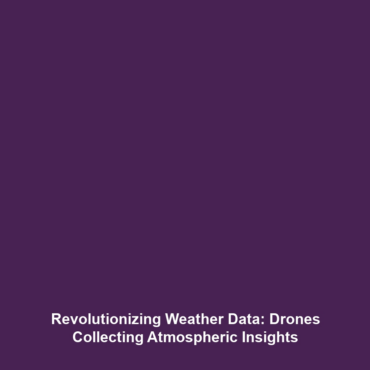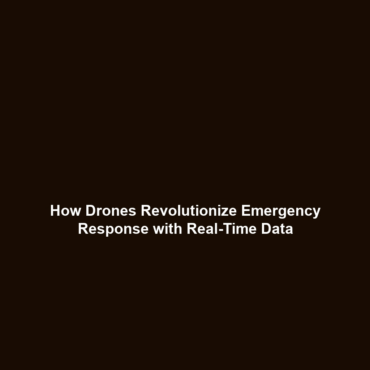Weather Data Collection: Drones Collecting Atmospheric Data
Introduction
In recent years, the integration of drones in science has transformed various fields, particularly in weather data collection. Drones equipped with advanced sensors can capture atmospheric data with unprecedented accuracy and efficiency. This technology not only enhances our understanding of weather patterns but also contributes to more effective climate monitoring and disaster response strategies. As we delve into this innovative approach, it is essential to recognize its significance in addressing global challenges posed by climate change and extreme weather events.
Key Concepts of Weather Data Collection
Principles of Atmospheric Data Collection
Drones utilize a combination of remote sensing technology and advanced data analytics to measure various parameters in the atmosphere. Key concepts include:
- Remote Sensing: Drones gather data from a distance using sensors that can detect temperature, humidity, wind speed, and pressure.
- Data Integration: Collected data is integrated with meteorological models to improve accuracy in weather predictions.
- Real-time Monitoring: Drones enable continuous data collection, facilitating immediate analysis and response.
Applications and Real-World Uses
The applications of weather data collection through drones are vast and diverse, showcasing their importance within the category of drones in science. Key applications include:
- Climate Research: Drones provide invaluable data for studying climate change impacts and patterns over time.
- Natural Disaster Management: They are deployed for real-time atmospheric data collection during hurricanes and wildfires, aiding in disaster response efforts.
- Agricultural Monitoring: Farmers use drones to monitor weather conditions, optimizing crop health and yield.
Current Challenges
Despite the promising potential of drones in weather data collection, several challenges remain:
- Regulatory Hurdles: Government regulations governing drone flight can limit research capabilities.
- Data Accuracy: Ensuring the precision of sensor data can be a concern, especially in rapidly changing weather conditions.
- Technical Limitations: Battery life and payload capacity may restrict the duration and extent of data collection missions.
Future Research and Innovations
The future of weather data collection using drones is bright, with numerous innovations on the horizon. Emerging areas of research include:
- AI Integration: Using artificial intelligence to analyze atmospheric data in real time for predictive modeling.
- Enhanced Payloads: Development of more advanced sensors that can measure additional atmospheric variables.
- Swarm Technology: Utilizing fleets of drones to cover larger areas efficiently.
Conclusion
In summary, drones collecting atmospheric data are playing a pivotal role in advancing our understanding of weather patterns and climate science. The integration of this technology presents numerous opportunities for research and applications that can significantly impact society. As we continue to innovate, it is vital to address existing challenges and embrace the future of drones in science. For further reading on the applications of drones in different scientific fields, visit our Drones in Science resource page.
This format contains a comprehensive overview of how drones collect weather data, structured for clarity, SEO optimization, and rich in relevant keywords.

